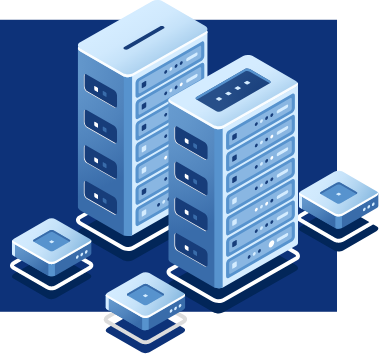Your consulting and services partner
for future-ready open source technologies
Top benefits of our offerings and approach
Independent and unbiased insights for smarter decision making
Design and architecting skills to address your current and emerging needs
Deployment and integration expertise to simplify the complexities
Automation to address a rapidly scaling landscape
Operational support so that you can be at ease
Migration from Oracle to PostgreSQL
Whitepaper

How MongoDB Enables Real-Time Data with Event-Driven Architecture
Watch
A cloud-agnostic database can enhance
your Hybrid and Multi Cloud deployments
Learn
What Does ‘Database High Availability’Really Mean?
Read


2. Streaming Data Pipeline
New age businesses can look at open source solutions as a futuristic way to handle blazing fast gigabyte data streams in a manner that allows for scalability, flexibility and agility without sacrificing optimum throughput and latency. When a lot rides on building out the most robust, least expensive and innovative architecture, we offer optimum solutions that seamlessly thread data engineering, input and analytics through to delivery.
Insights
- ■Multiple data sources
- ■High velocity of data ingestion
- ■Real time analytics
- ■Proliferation of IoT and sensors
- ■Log analytics
Design Considerations
- ■Monitoring and decision making
- ■Distinctiveness over traditional DWH
- ■Data retention
- ■Reports and dashboarding

Success Stories
Log aggregation and monitoring platform for a global finance industry application provider
Background
A global provider of banking and financial applications hosts core banking applications for emerging banks and providing core-banking-as-a-service. The client had to provide stringent uptime SLA for the banking operations and hence has to setup highly scalable, versatile infra monitoring platform.
Challenge
Moving to a centralized log aggregation platform from different ones for each bank was a critical challenge. The rate of data ingestion was not known in the beginning. To ensure that logs are not dropping due to data pipeline bottleneck was key.
Success
Ashnik played a critical role in designing the entire log aggregation and monitoring platform based on the Elastic stack. Ashnik automated the deployment of 1000+ NGINX instances using the Ansible platform. Ashnik designed, deployed and operated the entire monitoring infrastructure.
Achieving real-time data sync for a leading insurance company’s agents and customers
Background
A leading insurance provider in Southeast Asia with a focus on Digital Transformation wanted to provide its agents and customers the ability to search policy data on a real-time basis.
Challenge
The customer implemented data integration and a NoSQL database platform to pull all data from the RDBMS of the core application. But, it took 24 hours to sync the data and thus the purpose of real-time search was lost.
Success
Ashnik re-architected the solution, implemented same technology stack that the customer wanted – messaging queue JMS, ELK stack, wrote custom scripts for real-time data synchronization. The solution helped the customer in achieving the desired business outcome by bringing down the data sync time to under 60 seconds which previously was 24 hours.
Build robust streaming data pipelines with MongoDB and Kafka
Learn

How to leverage Hadoop in the Analytic Data Pipeline
Download
Using ELK with OpenShift for Container log monitoring
Play
Ashnik Delivers A Highly Scalable Logging And Monitoring Platform For A Fortune 500 Company
Case Study


3. Unified Observability
Build out new capabilities and scale up with open source technologies that work in concert with the orchestration capabilities of Kubernetes. Spin up larger, more demanding or complex applications in ways that deliver greater storage, global load balancing efficiencies, order management and self-healing ability. With our open source solutions, administrative tasks can be automated, so that there are reduced manual distractions and businesses can concentrate on core for rapid innovation and effective data management.
Insights
- ■Containerization
- ■Portability across platform
- ■Microservices
- ■Kubernetes operators
- ■Internal cloud platform
- ■Multi-cloud and hybrid cloud approach
Design Considerations
- ■Complexity of Orchestration
- ■Container security
- ■Container log monitoring
- ■Network and data traffic across platforms

Success Stories
Enabling the Container and Kubernetes journey for a top Mongolian Bank
Background
One of the top Banks in Mongolia wanted to expand its reach by having tie-ups with various telecom vendors in the country. To make this possible, it wanted to containerize its application so that they could be deployed on the desired cloud platforms and integrated with the telecom vendors.
Challenge
The Bank was new to containterization and wanted to choose the right Kubernetes platform to get it off-the ground swiftly and efficiently. It approached Ashnik to provide the design, consulting and training for its team.
Success
Ashnik worked closely with the bank’s application team, reviewed its microservices architecture, helped it adopt the Kubernetes platform, provided consulting support, and trained its team. The bank now deploys and scales out its applications on varying cloud platforms. It is also equipped to integrate its offering with the telecom vendors when the need arises.

4. Kubernetes and Cloud
Evolve your business abilities to incorporate the flexibility of managing infrastructure across hybrid or multi-cloud platforms. With open source solutions you can opt for a hybrid cloud architecture by blending proprietary infrastructure along with a public cloud service. Or, choose to adopt a multi-cloud platform strategy for best of breed services, avoidance of single provider lock-in and advantages of price. We can help you choose the right solution based on an assessment of workloads, databases, networks, SLAs, storage and scalability demands.
Insights
- ■Portability across platforms
- ■Application containerization
- ■Kubernetes orchestration
- ■Convenience of deployment
- ■Ease of scale up / scale down
- ■High Availability zones
Design Considerations
- ■Multi-vendor Vs. Multi-cloud
- ■Application architecture
- ■Cloud native services
- ■IaaS Vs. Paas/ XaaS
- ■Cross platform integration
- ■Local data centers

Success Stories
Enabling the adoption of Hybrid cloud strategy and migration for a world leader in prescription lens
Background
A world leader in corrective lenses wanted to adopt a hybrid cloud strategy and subsequently transition its key workloads to Azure.
Challenge
Their business-critical applications were running on PostgreSQL, but were not fine-tuned for performance. The customer wanted to modernize the architecture and then move their workloads to the cloud.
Success
Ashnik played an important role in fine-tuning the application, re-architecting the database deployment, and designing a plan to transition to cloud. Ashnik provided the operational support during this entire phase.
Reduce the complexities of managing Kubernetes clusters anywhere
Learn

Reduce the complexities of managing Kubernetes clusters anywhere
Whitepaper
Multi-cloud strategy: What it doesn’t guarantee
Read
How to setup Enterprise Redis for a Multi-Cloud Environment?
Play


5. DevOps and Automation
If your business has ever experienced an IT system where deployments were manual, untrackable, siloed, dysfunctional or frequently crashed with multiple users, you will understand the need for a reliable and resilient DevOps and Automation architecture. With open source, businesses can create an environment where automation is natural, collaboration is easy, ROI is aligned to business objectives and deployments are seamless. Building out the DevOps and Automation structure a business needs can critically shift operational culture and driver efficiency and accountability.
Insights
- ■DevOps culture
- ■Agile development
- ■Cloud platform for deployment
- ■Containerization
Design Considerations
- ■Choosing right tools
- ■Integration of tools
- ■Cloud native services Vs. technology services
- ■Automation of application deployment
- ■Infrastructure as a code

Success Stories
Data Pipeline automation for a top Singapore based Bank
Background
One of the top banks in Singapore, is strengthening its footprint across Asia. In the age of Digital First world, it wanted to ensure highest quality customer experience across the region.
Challenge
Bank has many product offerings and are accessed through 200+ domains. To improve its content delivery experience, Bank has migrated to new CDN vendor – Cloudflare. Bank wanted to integrate the logs from Cloudfalre’s cloud platform to Bank’s platform. Bank also wanted to make use of its AWS S3 storage.
Success
Ashnik designed the solution to integrate logs from Cloudflare to AWS S3, pull them in ELK stack and provide analytics ability to the bank. This solution required multiple levels of security checks to be implemented across cloud providers and integrity of logs being ingested. Ashnik designed and deployed this solution.

Container and Kubernetes security: 5 Keys to a Secure DevOps Workflow
Whitepaper

Open source tools for DevOps
Read
DevOps with MongoDB
Download
The Cloud Operating Model: DevOps, Security, and more
Learn




